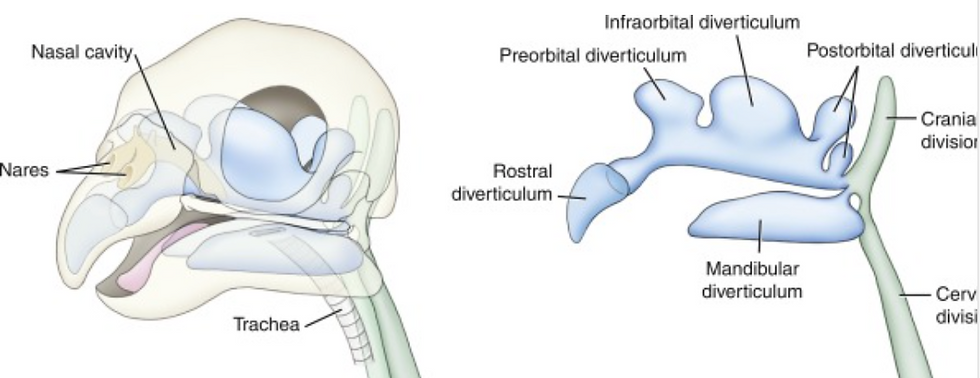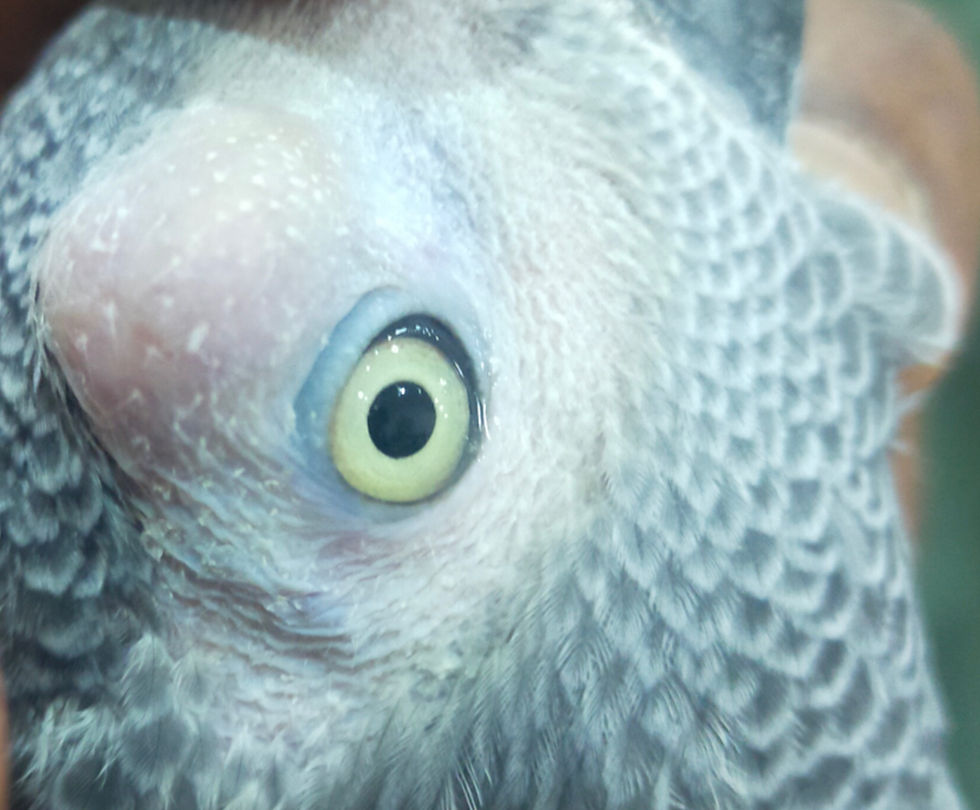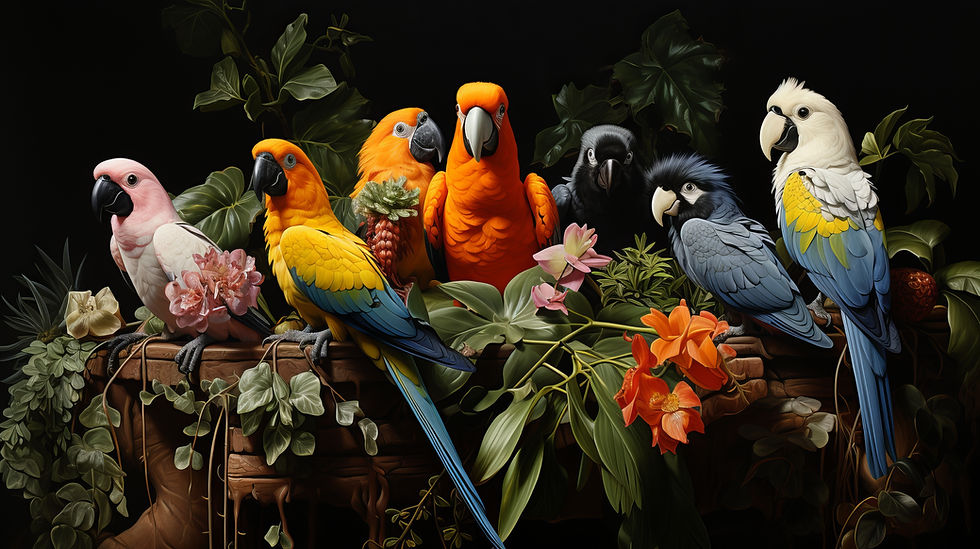Caseous Eye Discharge in Parrots
- Dr Andrew Matole, BVetMed, MSc

- Aug 31
- 3 min read
Updated: Sep 13
Introduction

Eye problems are common in parrots, and one of the more alarming conditions owners may notice is the presence of a white or yellow, cheese-like (caseous) substance in or around the eye. Unlike in mammals, pus in birds tends to solidify rather than remain liquid, which is why it often appears as a firm plug. This article explains the causes, clinical signs, treatment, and owner guidance for this condition.
What is the “caseous substance” in parrots' swollen eye?

The white or yellow cheese-like substance sometimes noticed around or inside the parrot’s eye isn’t normal “eye goo.” In parrots, pus is not runny. Due to the high concentration of heterophils (the avian equivalent of white blood cells called neutrophils), avian pus tends to dry out and form a thick, caseous mass that is typically lodged in the bird's eye (conjunctival sac) or around the eye (infraorbital sinus) and must be physically removed.
What causes the caseous substance?
Several problems can lead to caseous eye discharge:-
Bacterial infections – Commonly Chlamydia psittaci (psittacosis), Mycoplasma, or Gram-negative bacteria (e.g., E. coli, Pseudomonas). These often cause sinus infections and produce thick, yellow-white caseous exudate.
Vitamin A deficiency – Poor diet, especially Vitamin A deficiency from all-seed diets is common in parrots and leads to squamous metaplasia of epithelial cells, blocking ducts of the Harderian and infraorbital glands, resulting in caseous plugs.

Fungal infections – Aspergillosis and other fungi can cause granulomatous inflammation with caseous debris.

Aspergillus fungus Viral diseases – Poxvirus and herpesvirus may cause caseous conjunctivitis or sinusitis.
Sinus blockage (foreign bodies or trauma) – Dust, seed husks, or trauma cause irritation that leads to secondary bacterial infection and caseous discharge.

Infra-orbital Sinuses, Cynthia, et al Chronic inflammation (Chronic sinusitis) – Particularly in Amazons and African greys, caseous pus may accumulate in the infraorbital sinuses.
Clinical Signs
Signs you may notice include:-
Caseous white/yellow substance in or around the eye
Conjunctival swelling (chemosis), redness, swollen eyelids or surrounding tissues
Periorbital swelling (swelling near the eye) or infraorbital sinus bulging (sinus involvement)

Infra-orbital sinuses filled with pus (white/yellow caseous substance) Nasal discharge, sneezing, or dyspnea (if sinus involvement)
Loss of appetite, ruffled feathers, or quiet behaviour
Poor feather quality, lethargy (if systemic disease like psittacosis)
How is it treated?
Treatment is geared to address both the underlying cause and the caseous material itself.
Veterinary diagnostics
Swabs for bacterial culture/sensitivity and Chlamydia PCR/ELISA
Blood work (especially if systemic signs are present)
Nutritional history review
Physical removal
Caseous material does not drain like mammalian pus—it must be manually removed, often under anaesthesia, through sinus flushing or surgical debridement.

Antibiotic/antimicrobial therapy
Depending on the cause, your bird may need:
Systemic antibiotics, e.g., doxycycline (for suspected psittacosis), enrofloxacin, or amoxicillin-clavulanate, depending on culture results.
Topical ophthalmic antibiotics (drops or ointments) for conjunctival involvement.
Antifungals (e.g., itraconazole, voriconazole) if fungal infection is confirmed.
Supportive therapy/nutritional management
Vitamin A supplementation if deficiency is suspected—either injectable or diet correction by switching from seed-only diets to pellets, dark leafy greens, and orange/red vegetables helps prevent recurrence.
Nebulisation with saline/antimicrobials for sinus infections.
Environmental (improved husbandry)
Reduce dust, improve hygiene, and avoid smoke or aerosol irritants.
Important to know
This is not something that can clear on its own.
Caseous material in birds does not drain like in people — it must be physically removed.
Early veterinary attention prevents the infection from spreading deeper into the sinuses or body.
What you can do as an owner
Book a vet appointment right away.
Avoid trying to squeeze or pick at the eye at home.
Review your bird’s diet and ensure Vitamin A-rich foods are included.
Keep the cage clean and dust-free.
Your parrot’s eye health depends on quick and proper treatment. With timely care, most birds recover very well.
References
Clubb, S. L., & Flinchum, G. (2013). Avian Medicine and Surgery in Practice. CRC Press.
Doneley, B. (2016). Avian Medicine and Surgery in Practice: Companion and Aviary Birds (2nd ed.). CRC Press.
Forbes, N. A., & Altman, R. B. (1998). Ocular and periocular disease in birds. Seminars in Avian and Exotic Pet Medicine, 7(3), 144–153.
Harrison, G. J., & Lightfoot, T. (2006). Clinical Avian Medicine (Vol. I & II). Spix Publishing.
Jones, M. P., & Orosz, S. E. (2000). Ophthalmology of exotic pets. Veterinary Clinics of North America: Exotic Animal Practice, 3(3), 445–466.
Ritchie, B. W., Harrison, G. J., & Harrison, L. R. (1994). Avian Medicine: Principles and Application. Wingers Publishing.
Samour, J. (2016). Avian Medicine (3rd ed.). Elsevier.
Speer, B. L. (2015). Current Therapy in Avian Medicine and Surgery. Elsevier Saunders.




















Comments